Dragon Fruit
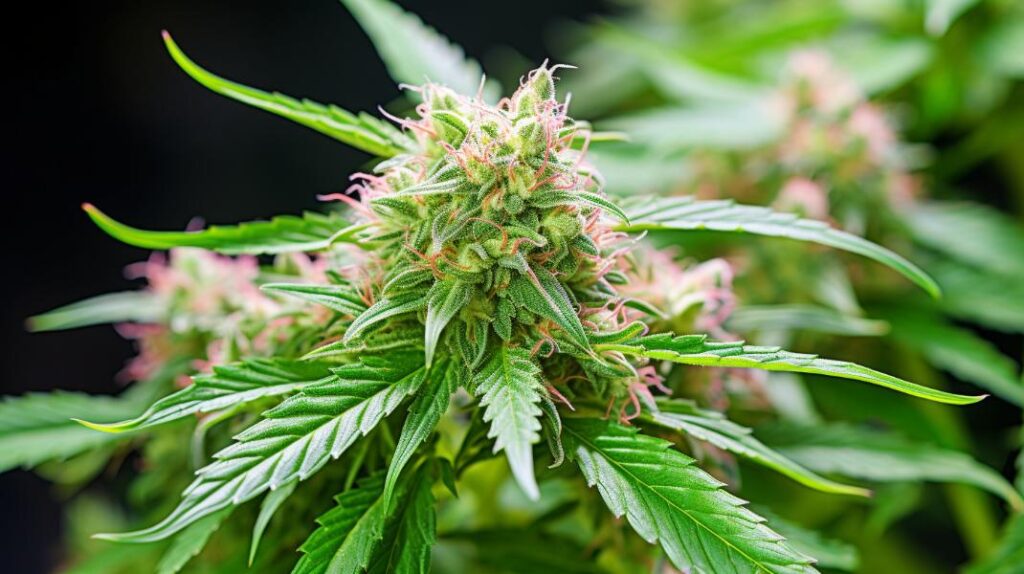
The Dragon Fruit strain is a carefully crafted hybrid, deriving its lineage from Super Silver Haze and Snow Lotus. With a balanced 50:50 indica-sativa composition, it operates within the endocannabinoid system to demonstrate a range of effects, anchored by a significant 25% THC concentration. The strain’s terpene profile—Pinene, Myrcene, and Caryophyllene—contributes to its unique aroma and offers various therapeutic benefits. Clinically, it is sought for its efficacy in managing chronic stress, depression, and migraines. Cultivation demands a Mediterranean climate, yielding up to 300 grams per plant. Exploring further reveals its unique capabilities in neuropsychiatric disorder management and pain relief.
Genetic Lineage
The Dragon Fruit strain boasts a hybrid genetic lineage derived from the crossbreeding of Super Silver Haze and Snow Lotus, embodying a rich heritage of dominant characteristics from both parent strains. This meticulously engineered genetic amalgamation positions the Dragon Fruit strain as a unique cultivar within the cannabis community, featuring a distinctive flavor profile that mirrors its namesake, the dragon fruit. This flavor complexity is augmented by subtle undertones of citrusy herbs, setting it apart in the sensory experience it offers to connoisseurs.
On a phenotypic level, the Dragon Fruit strain exhibits large popcorn-shaped forest green nugs, adorned with amber hairs and a generous coating of amber crystal trichomes. This visual appeal is not just aesthetic but also indicative of the strain’s potency, promising a robust experience to its users. The genetic architecture of Dragon Fruit facilitates a multifaceted interaction with the endocannabinoid system, leading to its reported efficacy in managing conditions such as chronic stress, depression, and mood swings through its prolonged cerebral and euphoric effects. This strain, hence, stands as a demonstration of the sophisticated breeding techniques that leverage the genetic strengths of Super Silver Haze and Snow Lotus to produce a hybrid that is both potent and flavorful.
THC/CBD Content
Characterized by its high tetrahydrocannabinol (THC) content, Dragon Fruit strain averages a potent 25% THC level, while its cannabidiol (CBD) content remains notably low, typically at 0%. This hybrid strain, with an equal balance of 50% indica and 50% sativa, presents a unique profile emphasizing THC’s psychoactive properties over CBD’s therapeutic effects. The substantial THC concentration underscores the strain’s pronounced potency, making it a sought-after choice for users seeking intense euphoria and psychoactive experiences.
Laboratory analyses of Dragon Fruit samples have consistently shown THC levels reaching as high as 25%, indicating a robust consistency in its psychoactive potential. Conversely, the almost non-existent CBD content, often found to be 0%, highlights the strain’s prioritization on recreational over medicinal benefits. This minimal CBD presence suggests little to no counterbalance to THC’s intensity, potentially amplifying the psychoactive effects experienced by users.
The Dragon Fruit strain’s cannabinoid profile, dominated by high THC levels and negligible CBD, positions it uniquely within the cannabis market. It caters primarily to those desiring the profound psychoactive effects attributed to THC, while the absence of CBD underscores its limited utility for those seeking CBD’s therapeutic benefits.
Terpene Profile
Expanding on its notable THC/CBD content, Dragon Fruit strain also boasts a distinctive terpene profile comprising Pinene, Myrcene, and Caryophyllene, which greatly influences its aroma, flavor, and therapeutic effects. These terpenes are not only the building blocks of the strain’s unique scent and taste but also contribute notably to its potential health benefits.
Pinene, known for its unmistakable pine-like aroma, is a prevalent terpene in Dragon Fruit. It is recognized for its potential anti-inflammatory properties, contributing to the strain’s appeal for those seeking relief from certain conditions. Myrcene, another dominant terpene, is associated with calming effects and potential sedative properties, adding to Dragon Fruit’s allure for users looking for relaxation or sleep aid. Finally, Caryophyllene, with its spicy and peppery notes, may offer anti-inflammatory and analgesic effects, further enhancing the therapeutic profile of Dragon Fruit.
Together, these terpenes create a symphony of aromas and flavors in Dragon Fruit that takes users on a unique sensory journey. The interplay of Pinene, Myrcene, and Caryophyllene not only defines the strain’s character but also underscores its potential for providing relief and relaxation, setting Dragon Fruit apart in the cannabis landscape.
Effects
Dragon Fruit, a hybrid strain with an even balance of 50% indica and 50% sativa, exhibits a complex array of effects including cerebral euphoria, increased focus, and notable relaxation, attributed to its significant THC content of 25%. Developed by Bodhi Seeds, this strain’s balanced genetic composition guarantees that users experience a multifaceted psychoactive effect, seamlessly blending the best attributes of both indica and sativa varieties.
| Positive Effects | Negative Effects |
|---|---|
| Cerebral Euphoria | Dry Mouth |
| Increased Focus | Paranoia |
| Notable Relaxation | Dizziness |
| Giggly Euphoria |
Users report a unique onset of effects with Dragon Fruit, starting with a cerebral rush that elevates moods and induces a state of giggly euphoria. This is closely followed by an increase in focus, making it suitable for creative endeavors. The experience is rounded off with a deep sense of relaxation without the heavy sedation typically associated with high THC strains. However, it’s important to note the potential for negative effects such as dry mouth, paranoia, and dizziness, which are common among strains with a high THC content.
Medical Uses
With its high THC content, the Dragon Fruit strain demonstrates efficacy in treating a variety of medical conditions, including chronic stress, depression, and migraines. The significant psychoactive compound, tetrahydrocannabinol (THC), plays an essential role in the strain’s ability to modulate mood disorders and pain perception. This is particularly relevant for patients experiencing chronic stress, mood swings, and chronic fatigue, who often report substantial relief after using this strain. The mechanism behind this involves THC’s interaction with the body’s endocannabinoid system (ECS), which is responsible for regulating a variety of physiological and cognitive processes, including mood, appetite, and pain sensation.
Moreover, the Dragon Fruit strain’s long-lasting cerebral effects make it a viable option for managing headaches, a common symptom associated with various medical conditions. Users have noted a significant decrease in the frequency and intensity of migraines, attributing this improvement to the strain’s potent THC content. Additionally, its efficacy in reducing eye pressure presents a potential therapeutic avenue for conditions like glaucoma, where pressure reduction is vital. Through its diverse medical uses, Dragon Fruit strain provides a multifaceted approach to symptom management, offering relief to individuals grappling with a spectrum of health issues.
Flavor and Aroma
The olfactory and gustatory profiles of the Dragon Fruit strain are characterized by a complex blend of fruity and herbal nuances, mirroring the exotic flavors and aromas inherent to its namesake. This particular variety of Fruit Marijuana exhibits a sophisticated taste palette that closely resembles the actual dragon fruit, embellished with subtle hints of citrusy herbs. The strain’s aroma compounds contribute to a bouquet of fresh fruity herbs underscored by an earthy pungency, which is indicative of its rich terpene profile.
Upon consumption, users are greeted with a unique flavor profile that intricately weaves notes of peach, grapefruit, and apricot, delivering a multifaceted sensory experience. These flavors, derived from the strain’s specific genetic makeup, underscore the importance of terpenes in shaping the organoleptic properties of cannabis. The Dragon Fruit strain stands out in the cannabis market due to its delightful synthesis of fruity and herbal undertones, making it a sought-after choice among connoisseurs and enthusiasts alike.
This strain’s popularity is further bolstered by its ability to provide a pleasurable consumption experience, where the interplay of its aromatic and flavor compounds contributes significantly to its overall appeal within the Fruit Marijuana category.
Appearance
Upon visual examination, the Dragon Fruit strain mesmerizes with its large, popcorn-shaped woodland green nugs adorned with amber hairs and a generous coating of amber crystal trichomes, presenting a frosty appearance indicative of its potency and quality. This scarce, evenly balanced hybrid showcases unique physical characteristics that distinguish it within the cannabis community. The compact nugs, thoroughly covered in trichomes, not only add to the strain’s visual allure but also suggest its intricate cannabinoid profile.
The distinct appearance of the Dragon Fruit strain is further emphasized by:
- The compact structure of the nugs, which are dense yet display a certain softness that makes them highly attractive to both cultivators and consumers.
- A distinctive color palette that blends deep woodland green with the warmth of amber hairs, creating a visual representation of the strain’s rich and varied genetic background.
- The abundant amount of amber crystal trichomes that envelop each nug, indicating a high terpene content and, consequently, a flavor profile that closely resembles the tropical fruit it is named after.
These features not only enhance the strain’s visual appeal but also indicate that the Dragon Fruit thrives best under conditions that promote the development of such unique characteristics.
Grow Information
Cultivating Dragon Fruit requires careful attention to environmental conditions, as this strain exhibits ideal growth in climates that mimic Mediterranean weather, necessitating a controlled temperature range and specific humidity levels for successful development. Adaptable to both indoor and outdoor environments, Dragon Fruit reaches a manageable height of 60-80 cm, making it especially suited for indoor cultivation where space may be at a premium. This balanced hybrid, with its indica genetics, thrives in conditions that closely simulate its preferred Mediterranean-like climate, requiring growers to maintain these specific environmental parameters within their cultivation spaces.
The strain’s flowering period, extending from 56 to 70 days when grown indoors, demands a precise light cycle to initiate and sustain flowering, highlighting the importance of controlled indoor conditions for the best yield. With harvests timing between October and September, Dragon Fruit is capable of producing up to 300 grams of buds per plant under ideal conditions. Its short, bushy stature contributes to a medium-sized yield, while the visually striking large popcorn-shaped forest green nugs with amber hairs and coating of amber crystal trichomes not only enhance its aesthetic appeal but also indicate its readiness for harvest.
Adverse Effects
While understanding the growth requirements of the Dragon Fruit strain is important for best cultivation, it is equally vital to contemplate the potential adverse effects users may experience, such as dry mouth, paranoia, and dizziness. These adverse reactions can detract from the overall experience and may pose challenges for individuals sensitive to THC or those new to cannabis consumption.
To mitigate such effects, a scientific approach to dosage and awareness of one’s tolerance level is advised. The Dragon Fruit strain has been associated with:
-
Dry Mouth: A common side effect, scientifically known as xerostomia, occurs due to the strain’s interaction with the salivary glands, leading to a decrease in saliva production. Staying hydrated can help alleviate this discomfort.
-
Paranoia: For some users, particularly those with a predisposition to anxiety or those sensitive to THC, consuming Dragon Fruit may lead to feelings of paranoia. This psychological response requires careful strain selection and dosage management.
-
Dizziness: Especially prevalent among new users or those unaccustomed to THC’s effects, dizziness can be mitigated by starting with lower doses and gradually increasing as tolerance develops.
Understanding these potential adverse effects empowers users to make informed decisions about their consumption of the Dragon Fruit strain, thereby enhancing their experience while minimizing discomfort.
Comparisons with Similar Strains
To effectively scrutinize the Dragon Fruit strain, it is crucial to compare its traits and effects with those of similar cannabis strains, focusing on aspects such as THC content, flavor profile, and reported therapeutic benefits. Dragon Fruit, with its potent THC level of 25%, positions itself as a strong option for users seeking intense cerebral euphoria and relaxation. This strength is analogous to strains like Snow Lotus, which also boasts high THC levels, though the exact percentage can vary depending on cultivation and breeding conditions.
The distinctive flavor profile of Dragon Fruit, reminiscent of its namesake fruit paired with citrusy herbs, sets it apart in the cannabis market. In contrast, Snow Lotus, while also recognized for its unique taste, leans more towards an earthy and musky palate with hints of berry and grape. This contrast in flavor highlights the diversity within hybrid strains, catering to diverse user preferences.
Furthermore, both strains are renowned for their therapeutic potential, particularly in addressing chronic stress, depression, and migraines. However, Dragon Fruit’s specific combination of cerebral euphoria and relaxation, along with its visually appealing large, popcorn-shaped nugs covered in trichomes, make it a favorable option for those prioritizing both aesthetics and effects in their cannabis experience.
Research and Studies
Given its balanced genetic composition and notable THC concentration, recent research on the Dragon Fruit strain has primarily focused on its unique pharmacological properties and potential therapeutic applications. Originating from a cross between Super Silver Haze and Snow Lotus, Dragon Fruit embodies a 50/50 indica-sativa hybrid structure, offering a multifaceted profile for scientific inquiry. The strain’s high THC level of 25% presents a compelling case for its efficacy in symptom management across a variety of conditions.
Studies have outlined several key areas of interest:
-
Neuropsychiatric Disorder Management: Research suggests Dragon Fruit’s potent THC content and balanced hybrid genetics may significantly alleviate symptoms of chronic stress, depression, and mood swings, offering a novel approach to mental health treatment.
-
Pain and Migraine Relief: The strain’s analgesic properties are under investigation for their potential to manage chronic pain, migraines, and headaches, which could provide a safer alternative to traditional pain medication.
-
Effects on Chronic Fatigue and Eye Pressure: Preliminary findings indicate that Dragon Fruit may offer relief for individuals suffering from chronic fatigue and elevated eye pressure, showcasing its versatility in treating a wide range of symptoms.
This ongoing research highlights Dragon Fruit’s potential as a therapeutic agent, underpinned by its genetic lineage from Super Silver Haze, paving the way for future clinical applications.
History and Origin
Crafted by the renowned breeders at Bodhi Seeds, the Dragon Fruit strain emerged from a meticulous genetic cross between Snow Lotus and Super Silver Haze, showcasing a rich lineage that contributes to its distinctive properties and high THC content. This hybrid marries the cerebral elevation characteristic of Super Silver Haze with the grounding, body-focused effects of Snow Lotus, yielding a balanced profile that is both invigorating and soothing. The result is a strain that not only boasts a THC level of approximately 25% but also offers a complex terpene profile, imbuing it with a unique flavor that hints at citrus, dragon fruit, and herbal notes.
Dragon Fruit’s genetic heritage is a demonstration of the scientific precision and dedication to quality that Bodhi Seeds is known for. The Snow Lotus parent, a powerful hybrid in its own right, contributes robustness and a depth of aroma that complements the more cerebral, energizing influence of Super Silver Haze. This strategic combination has produced a strain known for its capacity to induce feelings of happiness, relaxation, and focus, making it a favorite among cannabis connoisseurs. Despite the discontinuation of Dragon Fruit seeds, its legacy persists, a confirmation of the art and science of cannabis breeding.
Frequently Asked Questions
Is Dragon Fruit a Sativa or Indica?
The classification of a cannabis strain, whether sativa or indica, is determined by its genetic origin and phenotype characteristics. The Dragon Fruit strain, a balanced hybrid, incorporates both sativa and indica genetics equally.
Is Dragon Indica or Sativa?
The current query pertains to the classification within the Cannabis genus, specifically whether Dragon is indica or sativa. Through genetic hybridization, strains like Dragon achieve a balance, rendering them neither purely indica nor purely sativa.
What Terpenes Are in Dragon Fruit Strain?
The terpenes present in the discussed strain, contributing to its distinctive flavor profile, include Pinene, Myrcene, and Caryophyllene, with Beta-Caryophyllene being particularly prominent. These compounds are key to the strain’s unique earthy and fruity aromas.
What Is the Most Powerful Indica Strain?
The most powerful Indica strain, characterized by its high strain potency, is Godfather OG. It boasts THC levels that can exceed 30%, offering profound sedative effects ideal for managing pain, insomnia, and stress.

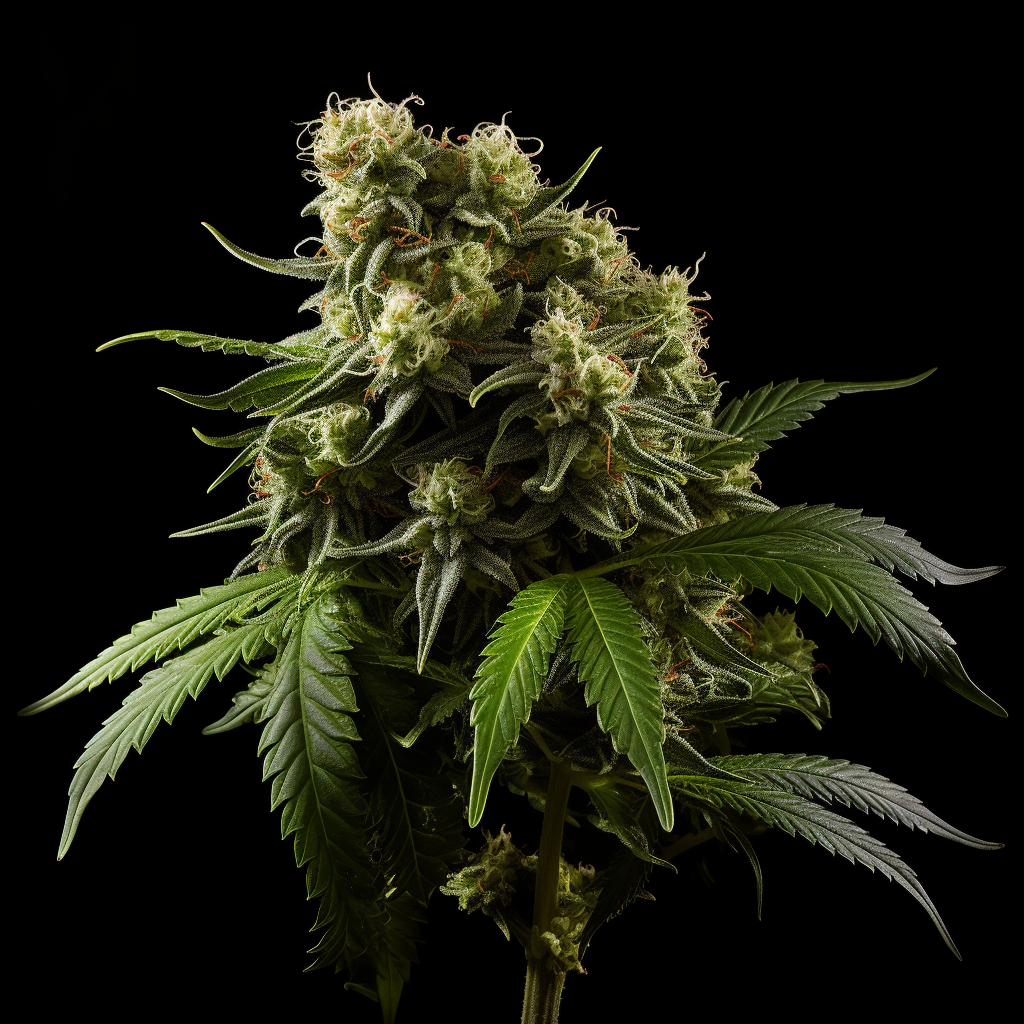
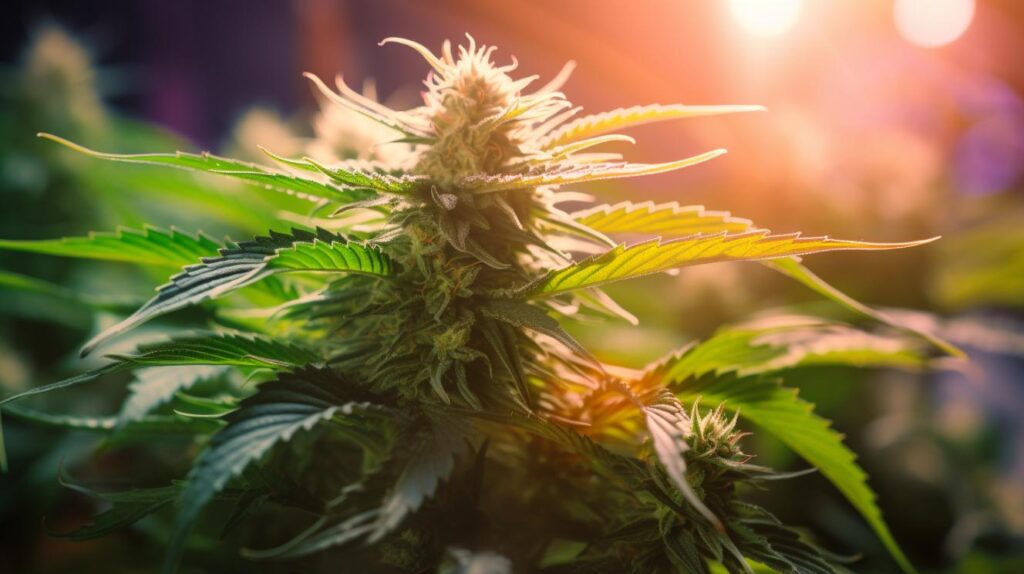
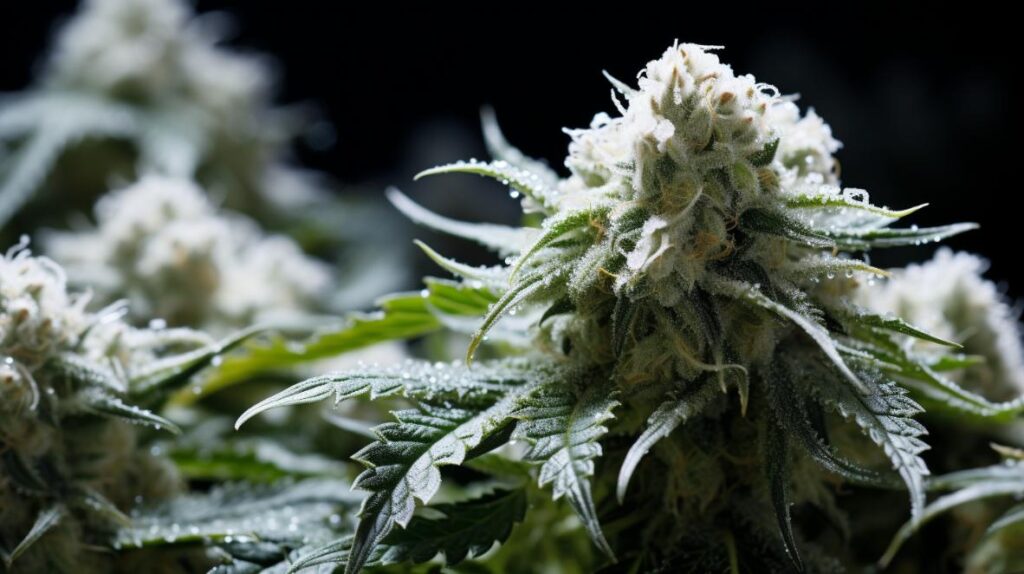
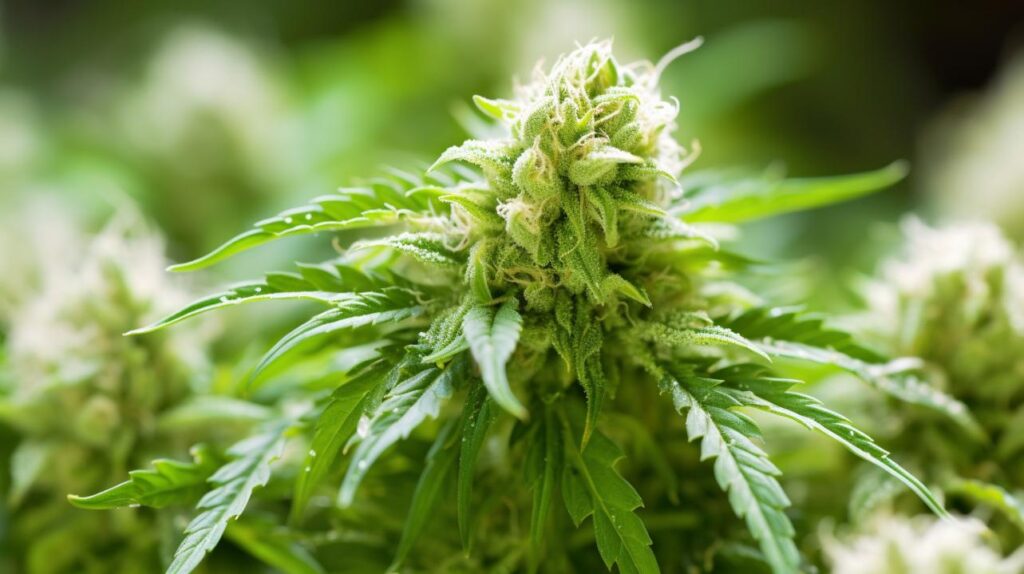


Responses